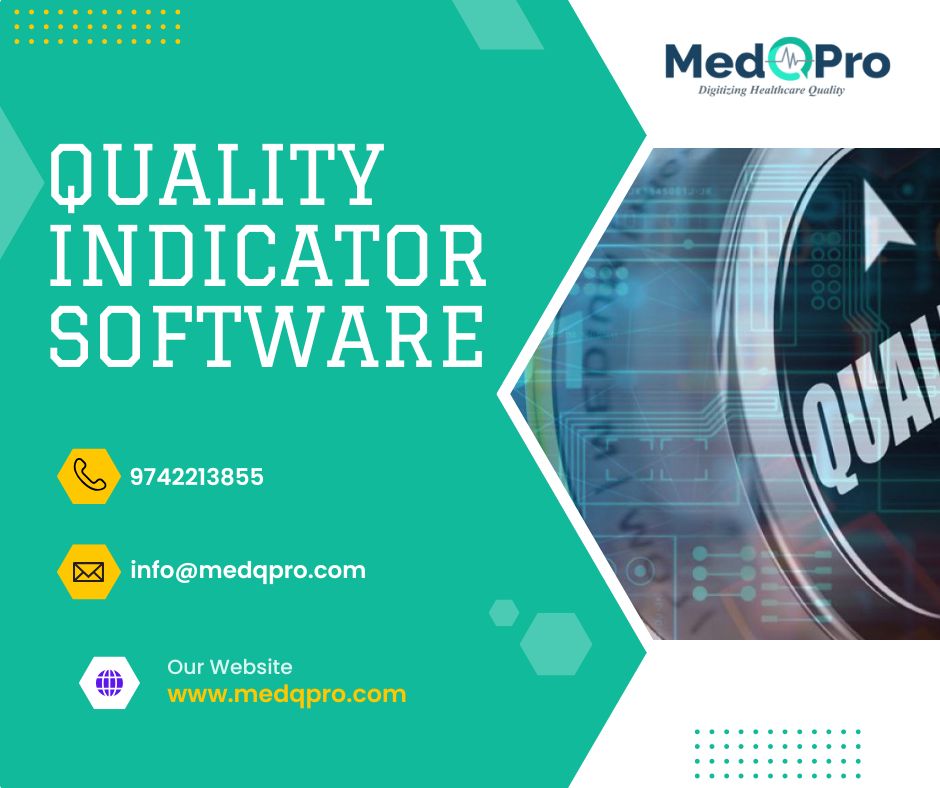
Maintaining high standards of patient care is a top priority for every healthcare facility. As hospitals grow in size and complexity, managing clinical quality indicators becomes more challenging. This is where Quality Indicator Software for hospitals plays a vital role. It simplifies the tracking and analysis of quality metrics, ensuring that hospitals can monitor, evaluate, and improve their services consistently. Whether it's patient safety, clinical outcomes, or compliance, this software ensures healthcare teams stay focused on delivering better care.
What is Quality Indicator Software and Why Hospitals Need It
Quality Indicator Software is a digital solution that helps hospitals measure, analyze, and improve performance across various departments. It is designed to collect data related to predefined healthcare quality indicators such as infection rates, readmission rates, patient satisfaction, and treatment success. Hospitals use this data to assess how well they are delivering care and where improvements are needed. With increasing pressure to meet regulatory requirements and patient expectations, this quality indicator software becomes essential for hospitals striving for excellence. Manual tracking of quality metrics is not only time-consuming but also prone to errors. By using Quality Indicator Management Software, hospitals gain access to real-time insights, reducing the risk of oversight and helping healthcare professionals take timely corrective actions. Moreover, having a centralized platform ensures transparency and consistency across the organization.
Key Features of Quality Indicator Management Software
One of the primary strengths of Quality Indicator Management Software lies in its ability to provide automation and customization. Hospitals can configure the system to track specific indicators based on their goals, specialties, or accreditation requirements. Most solutions include dashboards that visualize data, making it easier for decision-makers to interpret trends and outcomes. Advanced features such as alerts, reminders, and audit trails ensure that no important detail is missed. Integration with existing Hospital Information Systems (HIS) also enhances usability and reduces duplication of work. From capturing incident reports to analyzing performance metrics, everything can be managed from a single platform. Additionally, multi-level access controls allow different users – from nurses to department heads – to view and act on data relevant to their roles.
Benefits of Using Quality Indicator Software in Hospitals
There are several benefits of implementing Quality Indicator Software in India and globally. Firstly, it improves the accuracy and consistency of data collection. Secondly, it supports data-driven decision-making by providing actionable insights. Hospitals can identify patterns, benchmark against standards, and implement targeted improvement plans. Another major benefit is enhanced regulatory compliance. Whether it's NABH, JCI, or other healthcare standards, having quality indicator data readily available simplifies audits and assessments. Patient trust also increases when hospitals can demonstrate a clear commitment to safety and quality. Over time, this not only improves patient outcomes but also enhances the hospital’s reputation in a competitive market.
Top Solutions and Choosing the Right One for Your Hospital
Selecting the right Quality Indicator Software for hospitals depends on several factors including the size of the facility, existing infrastructure, and specific reporting needs. Some of the top solutions offer customizable modules that align with national and international healthcare quality standards. It’s important to choose a system that is easy to implement and comes with adequate training and support. Cloud-based solutions are often preferred due to their flexibility, scalability, and lower upfront cost. These platforms ensure secure data storage and remote access, which is particularly useful for multi-location hospitals. The ideal software should also support continuous updates and adapt to new quality standards as they evolve.
Increasing Demand for Quality Indicator Software in Healthcare
The healthcare industry is witnessing a growing demand for Quality Indicator Software as hospitals and care facilities prioritize data-driven quality improvement. With rising expectations from patients, accreditation bodies, and government regulators, healthcare organizations are under pressure to consistently meet high standards of care. Manual processes no longer suffice when it comes to tracking complex clinical outcomes and performance indicators. Hospitals are now seeking smarter, automated systems that can provide accurate insights in real-time. This demand is further fueled by the need to improve patient safety, reduce errors, and enhance overall operational efficiency. Quality Indicator Software empowers healthcare providers to monitor trends, detect early signs of non-compliance, and act quickly to correct issues. It also plays a key role in supporting evidence-based decision-making and streamlining internal audits. As the focus on accountability and transparency increases, more healthcare institutions are turning to digital solutions to meet both clinical and administrative quality goals effectively.
Conclusion
For hospitals aiming to raise the bar in clinical excellence, adopting a robust Quality Indicator Software is no longer optional—it is essential. It empowers healthcare providers to improve patient care, meet regulatory requirements, and drive a culture of continuous improvement. To ensure your hospital stays ahead, trust a reliable partner like MedQPro to deliver quality-focused digital solutions tailored for the healthcare industry.